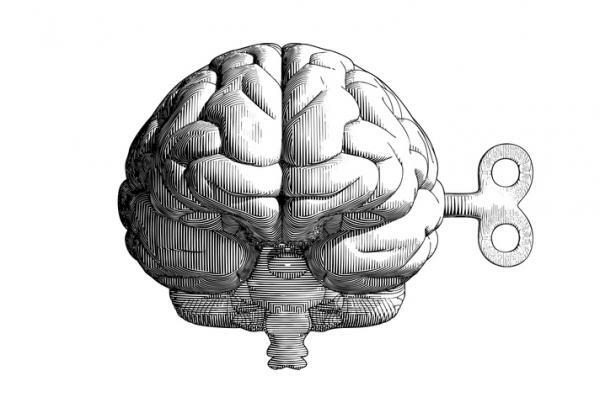
You've probably heard of withdrawal symptoms. However, you have not thought that you can go through it if you have not been a user of any hard drug. Although in these types of substances the withdrawal syndrome is, in general, more intense, there are many types of substance that can cause withdrawal syndrome when we stop using them. From coffee to alcohol or tobacco can generate this process so it is quite Probably all of us, at some point in our lives, go through this process, even if it is milder. Since this is the most common, we will focus mainly on abstinence from these two substances, although the processes are similar for any substance.
Therefore, in Psychology-Online we want to resolve all doubts about what what is withdrawal syndrome, its duration, its stages and its treatment.
Index
- What is Abstinence Syndrome?
- Phases in withdrawal syndrome
- Duration of withdrawal syndrome
- Treatment of withdrawal syndrome
What is Abstinence Syndrome?
Abstinence is a feeling of discomfort that occurs when you stop consuming a certain substance. This begins when the presence of this substance in tissues and blood decreases. The characteristic symptoms of withdrawal can cause the person to use the substance again in order to alleviate them.
Depending on the substance, symptoms may be headaches, chills, dehydration, nausea, seizures, or hallucinations. All symptoms depend on the person and the degree of consumption.
- In the case of alcohol withdrawal may appear the delirium tremens in cases of high consumption. This leads to anxiety, sadness, irritability, nightmares, seizures, hallucinations, among others, and can be fatal in the most severe cases.
- Regarding the tobacco, it is common for weight gain, increased appetite, difficulty concentrating, irritation, anxiety or trouble sleeping, among others. In this article you can see the effects of tobacco on the brain.
Phases in the withdrawal syndrome.
In the phases of addiction recovery, we find the 4 phases of the withdrawal syndrome.
- Withdrawal phase or withdrawal syndrome. This stage of withdrawal syndrome lasts between one to two weeks. It is characterized by the hardest moments of the withdrawal syndrome since the physical symptoms are in the highest stage. This can cause high desire to consume, irritation, anxiety, anger, depression ...
- Early withdrawal phase or honeymoon. The person feels very confident about overcoming the problem. Sometimes, it becomes illusory and it is believed to have a control over the situation that does not correspond to reality. The problem with this is that it can cause that, due to that relaxation before the situation, the person to consume again. This phase lasts 4 to 6 weeks.
- Prolonged withdrawal phase or wall phase. In this phase of the withdrawal syndrome, the person experiences it as a setback since energy decreases again, there are again desires to consume, there are feelings of sadness or anger, sexual function may be impaired, and family and social problems may arise in general. This phase lasts about 3 or 4 months.
- Adaptation and resolution phase. In this phase, the person has overcome physical abstinence, which implies greater emotional stability. Therefore, the person begins to resume his life and to include new healthy habits.
With the Faerström test you can know your level of dependence on tobacco.
Duration of withdrawal syndrome.
How long does drug withdrawal last? How long does it take to overcome an addiction? Keep in mind that physical abstinence is temporary and it is the one that follows these phases, which can last between 4 and 6 months. However, psychological dependence is permanent. Although, at first it is more intense and then you can live with those remnants of dependency, you must always be alert and do not trust ourselves with consuming again "just for once", since it would reactivate the physical dependence of new. Remember that "just for once" is part of that more psychological dependence that does not end up disappearing.
It is difficult to give an exact answer to how long the withdrawal syndrome lasts, since it will depend on the substance, consumption and the person, but we can say that physical abstinence has its peak between the 24 and 72 hours, then the intensity decreases. In tobacco, the most physical symptoms last between 2 or three weeks, being a similar duration with alcohol. The intensity of psychological withdrawal also decreases, although it may never completely disappear, but the most annoying symptoms usually remit between 4 and 6 months later.
Here you can see the different types of addictions and their consequences.
Treatment of withdrawal syndrome.
If the substance on which you are dependent is alcohol, it is usual to need a supplementation in vitamin C and vitamin B1, in addition to magnesium and glucose since there is a slight malnutrition. It is common for a psychiatric support in the event that medication for anxiety is necessary (although it is not recommended because it generates addiction) and a psychological therapy, both individually and at the group level.
In psychological therapy, both in terms of tobacco and alcohol, the reasons why it is consumed are worked on: alleviate anxiety, due to social or cultural aspects... and alternatives are sought for the same. They train relaxation exercises and forms of distraction for the person to apply them every time they have a desire to consume. Likewise, irrational ideas about the status implied by consuming (in the event that consumption is carried out by social pressure) and assertiveness is trained to learn to refuse consumption. In the same way, the person is reminded of the withdrawal process that they have had to go through due to the consumption they have exercised.
In the case of caffeine, nicotine is commonly used to alleviate symptoms. In addition, since it is common for sudden cravings to appear, they are worked distraction techniques by the time they appear.
In this article we talk about the marijuana addiction treatment.
This article is merely informative, in Psychology-Online we do not have the power to make a diagnosis or recommend a treatment. We invite you to go to a psychologist to treat your particular case.
If you want to read more articles similar to Withdrawal syndrome: what it is, symptoms, duration and treatment, we recommend that you enter our category of Personal growth and self-help.
Bibliography
- American Psychiatric Association, (2013), Diagnostic and statistical manual of mental disorders (5th ed.). Arlington, VA: American Psychiatric Publishing.
- Campbell Collaboration. (2017). 12-step programs to reduce illicit drug use are neither better nor worse than other interventions.
- Myers (2006), Psychology 7th edition, Editorial Médica Panamericana: Madrid
Withdrawal syndrome: what it is, symptoms, duration and treatment


